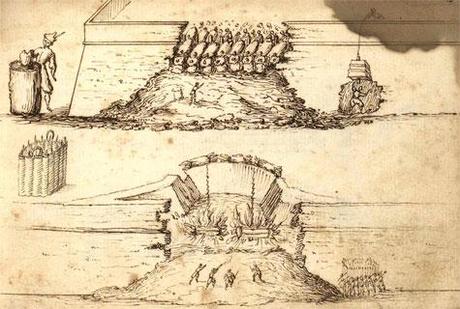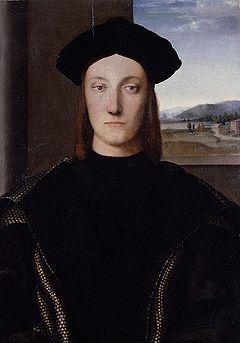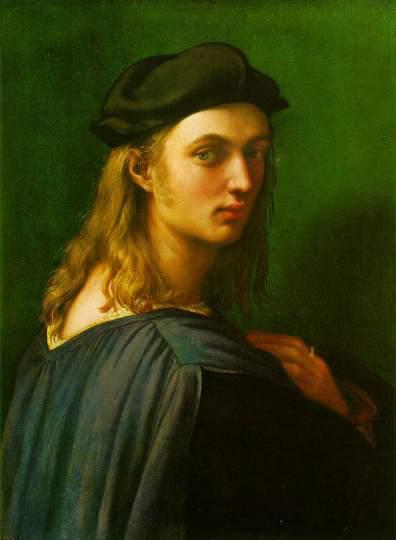
I. Geopolitical Shapes
If Renaissance Italy was a soccer team, the formation would be, roughly, the 3—5—2. In the defense, from the south, the Kingdom of Naples, the Papal States and the Duchy of Urbino. The midfield was made up of a series of small territories which had formed the backbone of the peninsula in the early modern age: the Duchy of Ferrara, Mantua, the Duchy of Parma and Piacenza, Florence (which was actually placed in front of the defense, in the position of the deep-lying playmaker), and the Republic of Genoa. The north would be the attacking force, with Milan and Venice. There were of course substitutes who could come into play and change alliances, altering the political and tactical line-up: for example, the Republic of Siena, given its deep ties to Rome, could change the defensive grid by turning it into a more traditional 4—4—2. Moreover, a duchy such as Urbino, to the far right of the overall shape, could be considered a classic wing-back: its political and military connections with both Rome and Venice allowed surging or retreat on either front and back foot.
There were also free riders, of course, people who played a ‘false nine’ position alongside political lines. One of these, the most famous, was the Duke Valentino, Cesare Borgia; supported by the Pope, he had chosen the Duchy of Ferrara as his zone in the field, but he also used to trace back to Urbino and in this way ended up spinning around one of the two advanced strikers, the Republic of Venice. When in 1502 the Valentino dethroned Guidubaldo da Montefeltro, the Italian grid was significantly modified.
II. From Rome to Milan
Rome, 1502. A young gentleman, with raven black hair and sad eyes, is resting in the twilight on a small bed in the Church of the Apostles. He is the Duke of Urbino, Guidobaldo da Montefeltro, and he is waiting for someone—the Pope’s son, the frightful Cesare Borgia, who is then 26 (Guidubaldo himself is 30), They would both die soon: Cesare in 1507, Guidubaldo a year later. Fellows until the end, for, as they say, enemies need each other to survive.
A young man walks in Milan, dark hair to his shoulders, a hat with a feather, a sumptuous robe of bright red, crossed by narrow dark stripes—a pattern repeated, with inverted colors, on his pants. The Castle sparks at the end of that long road. Alberto Aquilani has just arrived in the lands of the Duke of Milan. He had served in the army of the giallorossi, but, betrayed by the conspiracies of the palace, had to flee to England. Some of the older soldiers of his new team noticed a strange resemblance to the Duke of Urbino: the framework of the shoulders, the hands clasped, the purplish complexion, the hair pulled back behind. Is Alberto a dangerous undercover agent? His name raised suspicion among the fickle supporters, the rich merchants, and the wealthy members of the guild that finances AC Milan. A man fleeing from his past arrives, but has he really left it behind? Will he faithfully serve his Duke?

But there’s more. Messer Alberto went to Turin, where he served one of the most ancient and glorious armies of the Peninsula. Those black and white troops had been the terror of most, but in Milan they had been an absolute nightmare. Treacherous land, the Piedmont, a nest of heretics. And that was not enough, take his first English adventure, when he sought glory in Liverpool. Who assures us, they say in Milan, that Aquilani is not a wily gunman, a sworn enemy, infiltrating among us? But the people are wrong to suspect. The tactics of Captain Allegri seem to have luck, and they also resemble the Renaissance Battle of Pavia in 1525, when the army of Francis I, king of France, attacked the German troops of Emperor Charles V. The French had a deep playmaker in the mercenaries guided by Giovanni delle Bande Nere, a Florentine leader, and in front a kind of three-striker system with a group of Swiss infantry, the artillery and on the left, in the position of Aquilani, the cavalry. (The other horse party, led by the King himself, played wide, like Cassano, waiting for free space in between the lines.) The effect of inserting off the infantry, which can distract the enemy cavalry and a part of themusketeers (red dots), opening a promising center hole for insertion of the mercenary troops. In reality, at Pavia the fire of the arquebusiers brought destruction into the noble French cavalry, but the pattern of lateral insertion proves a good resource in any case.
III. From Urbino to Florence
Rome, about 1512. A painter born in Urbino is painting a young man in his twenties. The painter’s name is Raffaello and he is a little older than his model (he would die a few years later, in 1520). The young man is beautiful, his hair the color of amber, blue eyes and full lips. He turns back: the painter is electrocuted. He asks him to repeat the gesture, and, his heart beating, reproduces it on the canvas. The young man is called Bindo Altoviti: noble and very rich. Maybe the wealth is not enough: Raffaello seems to read through those eyes full of spleen, looking beyond the picture, beyond the present.
Bindo is from a Florentine family of bankers, like the Medici themselves. The father had built his fortune in Florence and Rome, and transmitted it to his son: but the inevitable rivalry with the Medici was soon transformed into an open conflict. Bindo lives at home struggling. In 1537, he supports an attempted coup led by some exiled personalities. Finally, thanks to the intervention of Pope Paul III, the fracture with Duke Cosimo I is recomposed, and amber-haired Bindo, who has now a long beard, is appointed senator of Florence. The spleen has given way to a fierce glare, full of cunning. Only the black hat seems to be a bridge between two ages of his life.

Florence is a city of ancient divisions between Guelphs and Ghibellines, the Medici and the republicans. Gangs and factions are formed between those who support the captain and those who would exile him. In a villa above Florence the coach, the elusive Corvino, and the patrons Della Valle plot their next move. Sir Riccardo is a problem, but to go without him would be suicide. Their thoughts go to Cosimo I, to what he did against the wealthy family of the Altovit. They too need a Pope to serve as a guarantor. One that even if Montolivo was ousted in Florence would immediately give him a new and prestigious spot. One who knows Florence and its people. Cesare Prandelli is the name that they think of. In a room of Palazzo Vecchio, the pact is narrow but clear: Prandelli will continue to use the refined and inconstant Montolivo.
The pale Alberto and the unpredictable Riccardo, whose moves are often inscrutable to the adversaries, form a fragile block. They represent the bold forays of Italian soccer into its Renaissance prehistory—a world of conspiracy, wealthy bankers and brilliant strategists. Aquilani and Montolivo are the avatars of the current squad of Italy: a ragged army of old acrobats, veterans of a hundred wars, dispossessed princes, mercenaries without pay, young vagabonds. If they could regain the charisma of a preacher and stir new enthusiasm, then they could convince Italy that they could fight globally and start to really win; otherwise, Europe will be the fieldwork of other emperors and kings, and Alberto and Riccardo mere magnets for the beggars. ♦

